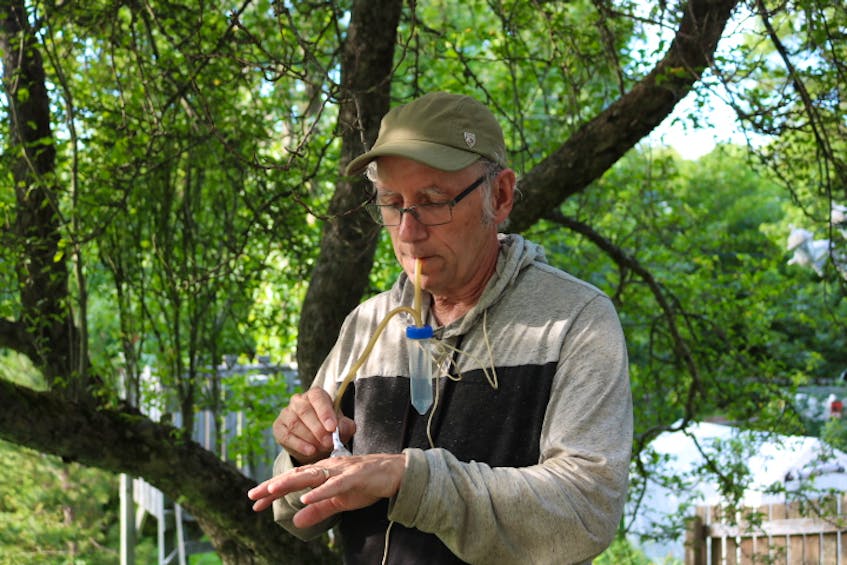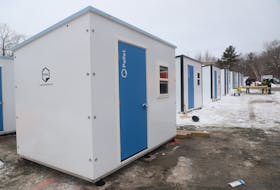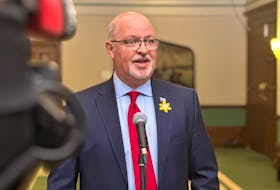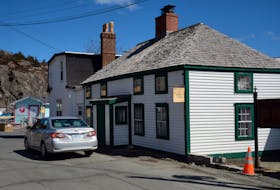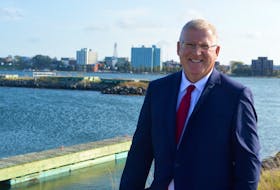Second in a two-part series. Read Part 1.
More and more these days, ordinary citizens are contributing to scientific data gathering. Because you don’t have to be a scientist to make factual-based observations or keep accurate records.
Interestingly, the growth in citizen science is in some ways simply a return to the roots of scientific study. And often, the driving force behind citizen science is what has always fuelled scientific discovery — intellectual curiosity.
“Organized science really didn’t happen until about the mid- to late-1800s. Before that, it was all citizen science,” explains Geoff Rayner-Canham, an environmental science professor at Memorial University’s Grenfell Campus whose interests include citizen science and the history of science.
He says scientists responsible for some important early discoveries, such as Charles Darwin and Isaac Newton, were simply men of privilege who had money and time to pursue their scientific curiosities.
“But interestingly, and often forgotten from history, there were women of science, but these weren’t of privilege,” says Rayner-Canham.
“These were women who were just fascinated by science, or did something as part of their own interest.”
There’s Tapputi, who lived around 1,000 BC, and created the earliest perfumes by separating compounds from nice-smelling plants. She’s considered the world’s first known chemist.
German-born naturalist Maria Merian’s 1600s-era plant life drawings are still used today.
And Agnes Pockels, born 1862, was a German pioneer in chemistry whose work was fundamental in establishing the modern discipline called surface science. She became interested in these properties while washing dishes, and studied them independently after her parents forbade her from attending university.

“So, the real true amateurs, without any benefit of upbringing and facilities, were the pioneering women,” says Rayner-Canham.
“Then in about the mid-1800s, science started to get organized.”
He says it became institutionalized, rather than a citizen activity, by the late 1800s, and became increasingly so over the years. But, he says, citizen science is coming back in vogue, and he believes it’s due to several factors.
“One is the need. In the environmental issues, we’ve got to be monitoring every part of the planet; we can’t just rely on a bunch of science people to go out in summers and take a half dozen measurements to be back to the university in time for the fall.”
As well, he says, improvements in technology have made it much more accessible.
He believes we could learn a lot, however, from the pioneering women.
“I think it’s an important message that there were these women going back for 3,000 years who were fascinated by how the world worked, and what it was made of. And they were women without any funding, without any big laboratory, without any country house — and actually did stuff.”
Citizens studying space
Rayner-Canham’s theory of attributing the more recent growth in citizen science popularity to both a need and a technological ability is no plainer to see than in the massive contributions everyday people are making in the field of astronomy.
Most recently, on Aug. 18, NASA announced that citizen scientists helped in the discovery of 95 substellar objects known as brown dwarfs, located within a few dozen light-years of the sun.

Retired St. John’s resident Garry Dymond is an amateur astronomer and citizen scientist who spends most of his time taking videos of Jupiter through his telescope, looking for meteor impacts.
If he notices anything interesting, he sends the video off to professionals who take a closer look.
“This program’s been on for a while, and amateurs all over the world take pictures and send them. Over the years, some people have actually caught meteors crashing into Jupiter,” says Dymond excitedly, though he says he hasn’t been that lucky himself.
He says he first became interested in astronomy in 1969 when Neil Armstrong landed on the moon. He’s been spending a lot of time looking up at the night sky ever since.
Dymond says he’s also spent a lot of time with the citizen science project Zooniverse, sifting through pictures of galaxies trying to find anything irregular.
“With all these satellites, they’re getting so much data, and they don’t have enough people to look at the data. So, they’re getting amateurs — people who are interested in astronomy,” he says.
“It’s kind of fun, especially if you find something. You’re helping science, and enjoying it yourself.”

‘More eyes on the ground’
As for how much citizen scientists are helping professional scientists in this province, the consensus appears to be: a lot.
From Fisheries and Oceans Canada (DFO) scientists to researchers at Memorial University, the many ways regular folks in the province can get involved seems to be endless.
At DFO, they have an entire program based on citizen-compiled data called the Citizen Science Cod Project.
Aquatic science biologist Hilary Rockwood runs the program which is now in its fourth year.
She hires high school students to spend their workdays on wharves in small communities around the province measuring the length of fish caught in the recreational fishery. Fishers can also self-report these findings through a survey on DFO’s website.
“It can help us gain more insight into what’s going on with the recreational fishery — the size of fish caught and whatnot — and also it gives the citizens of Newfoundland and Labrador a chance to really contribute to DFO science,” says Rockwood.
She says the best way to collect fisheries-dependent data is to have people on the ground doing the work.
Cynthia McKenzie, a research scientist and aquatic invasive species lead with DFO, echoes that sentiment.
McKenzie says when it comes to invasive species, such as green crab, finding them early is the key. One of the ways this is done is by issuing experimental licences and loaning traps to ordinary people around the province.
“The citizen science helps in several ways. It certainly gives us a lot more eyes on the ground with people who are interested, and also, it gives us a chance to respond because it’s a big province and we cannot be everywhere. So, it gives us an area where if someone reports something, then we can follow up and respond and see what the situation is,” says McKenzie.
She says it’s because of the observations of one citizen scientist in 2007 in Placentia Bay that green crab was discovered in the province.
McKenzie says DFO has been working with Indigenous groups in Labrador over the past two years to equip them with traps and licences to catch green crab in the event they show up on the Labrador coast.
“That’s the beauty of citizen science throughout Canada, or the world in general, is that it’s particularly valuable in areas that are pretty remote. It would take us days to go up there and just throw a few traps in the water, whereas they are right there, and they can do it repeatedly, and certainly cover a lot more time and area than we ever could.
“So, that’s the real value, is the ability to cover remote areas because even if we were up there, we’d only be able to stay for a few days, and it would just be a tiny snapshot compared to what they could do.”
Demystifying science

Memorial University professor of environmental and occupational health, Atanu Sarkar, says citizen science helps to close the widening gap between communities and research institutions.
“Sometimes we scientists do our research with our main goal as the public welfare, but sometimes we are not associating ourselves with the public.”
Sarkar says he availed of citizen science in his work for the first time recently, and the citizen scientists became “an integral part of our team.”
Along with a group at Memorial University, he’s studying mosquitos in the province to see what diseases they might carry, such as West Nile virus, and how that might be affected by climate change.
His colleague, Hugh Whitney, a retired provincial veterinarian, says they previously did this research using only graduate students and ended up with mosquito samples from a smaller area.
By enlisting the help of citizen scientists, they were able to collect samples from across the province. This year, roughly 65 people submitted mosquito samples.
“We never would have been able to do that as a traditional research team,” says Whitney. He says that’s partly because of the cost associated with such an endeavour, but also due to the short season. With more people scattered around the province collecting samples, they can cover a larger area in the short time span available.
And while Sarkar also noted that benefit, he says the real fundamental benefit of using a citizen science approach is to generate the scientific mind of the community.
“If you see what is happening with our southern neighbour with this pandemic, and the use of masks, you see how people are resisting masks — they don’t follow science. I don’t blame them fully because it is also partly (a) responsibility to the scientific community to demystify the science,” says Sarkar.
“It might be linked to mosquitos, it might be linked to climate change, it might be linked to environmental pollutants, it might be linked to community gardens — any area, just name it — but I think it is always good to have that gown and town interaction, gown meaning lab scientists. And citizen science is the best approach to reach out to those people.”

